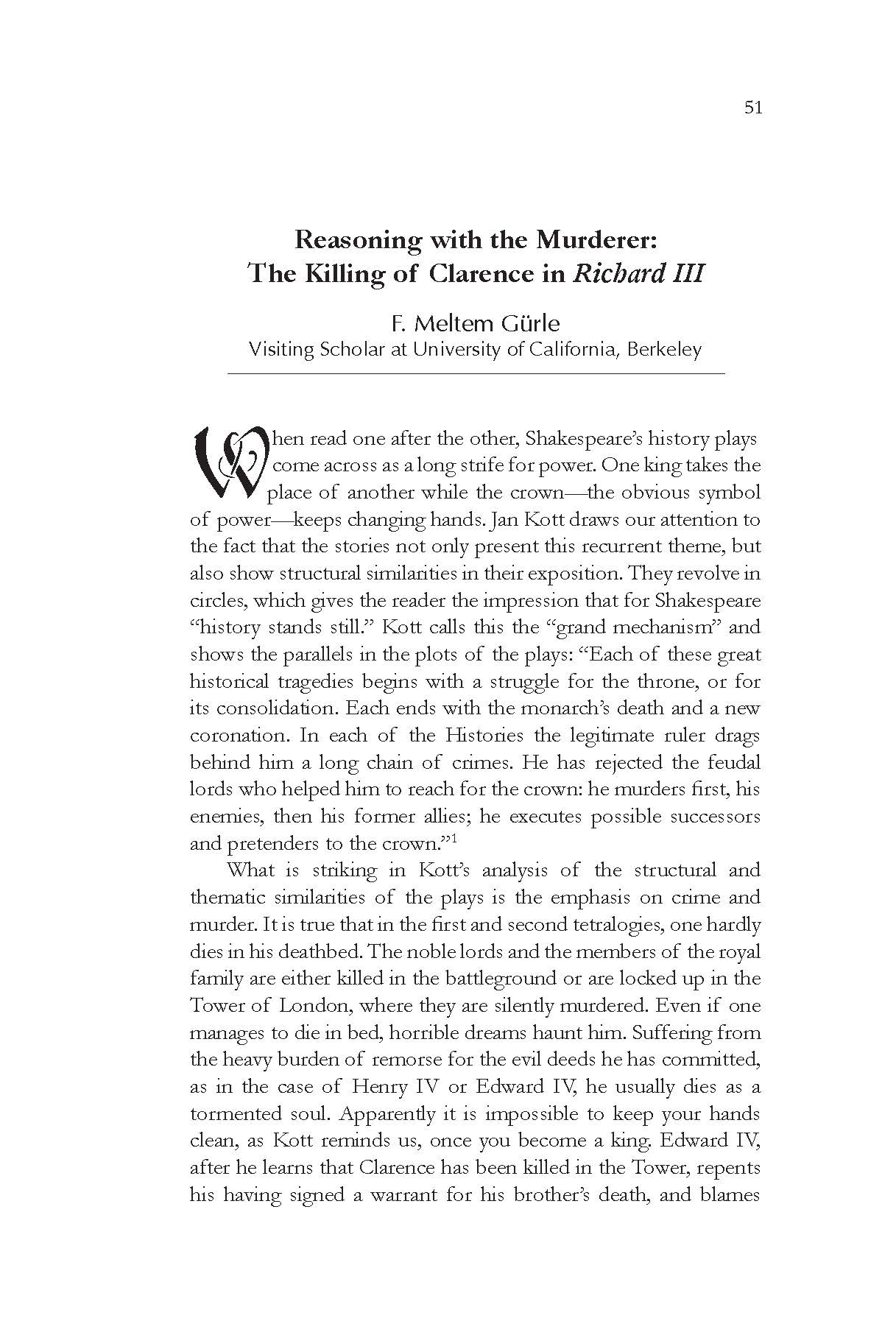Reasoning with the Murderer: The Killing of Clarence in Richard III
Main Article Content
Abstract
When read one after the other, Shakespeare’s history plays come across as a long strife for power. One king takes the place of another while the crown—the obvious symbol of power—keeps changing hands. Jan Kott draws our attention to the fact that the stories not only present this recurrent theme, but also show structural similarities in their exposition. They revolve in circles, which gives the reader the impression that for Shakespeare “history stands still.” Kott calls this the “grand mechanism” and shows the parallels in the plots of the plays: “Each of these great historical tragedies begins with a struggle for the throne, or for its consolidation. Each ends with the monarch’s death and a new coronation. In each of the Histories the legitimate ruler drags behind him a long chain of crimes. He has rejected the feudal lords who helped him to reach for the crown: he murders first, his enemies, then his former allies; he executes possible successors and pretenders to the crown.”1
